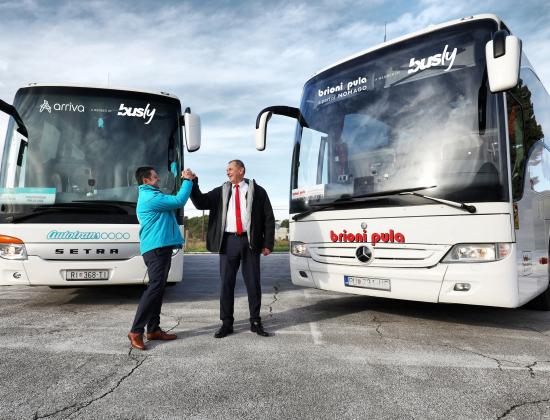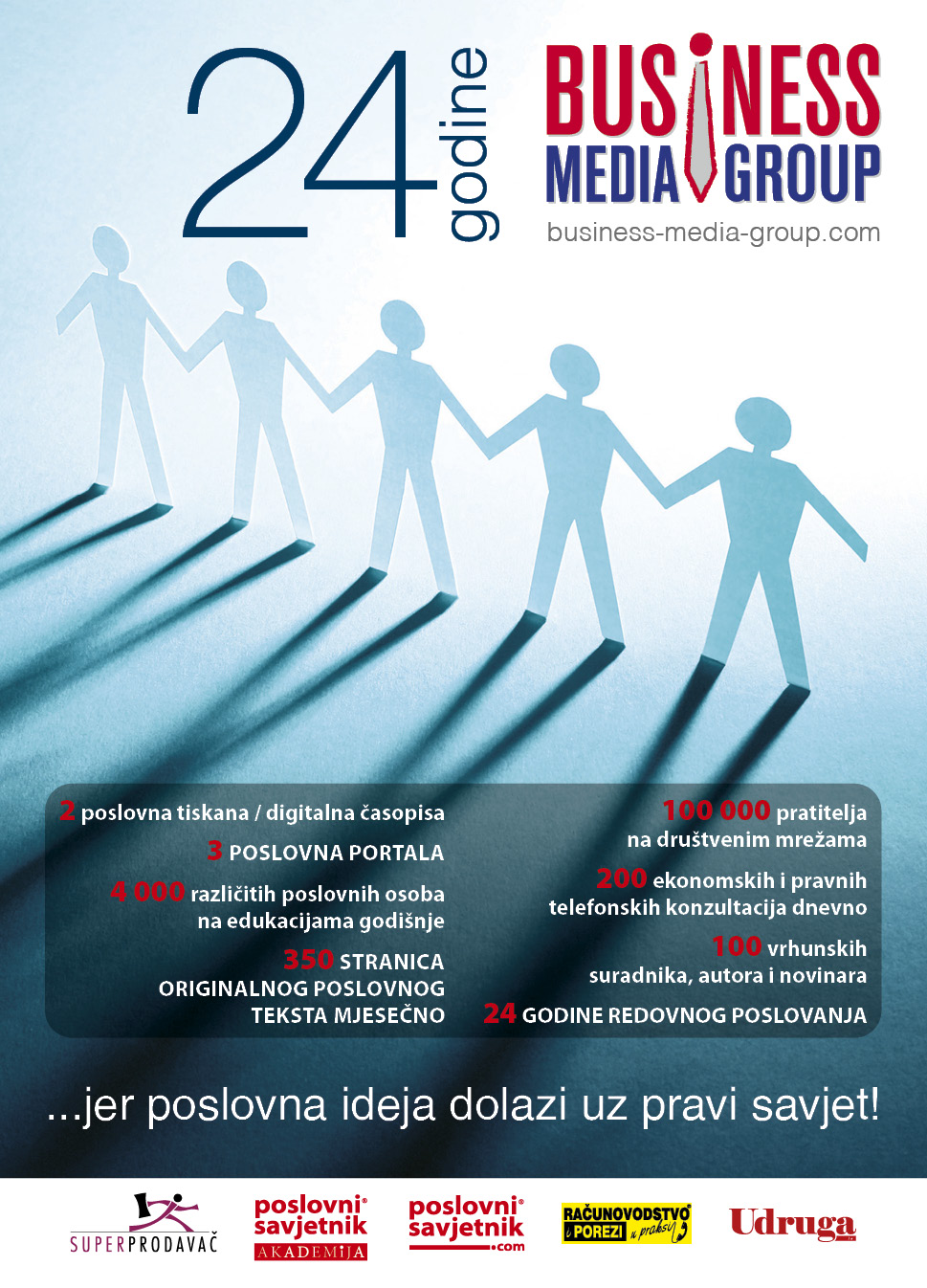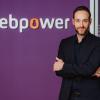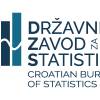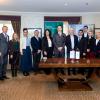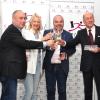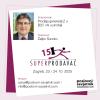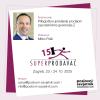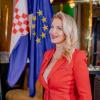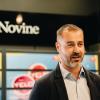John Lodder: Forget the saying: ˝If it is not broken, do not fix it˝

We live in speedy times and in this column I explain what this means for your organization.
Then I invite you to read the inspirational success story of Haier: how a Chinese company became a global player thanks to a leader with vision and courage.
Two developments influencing your organization
In nearly 2 years the pandemic created enormous, disruptive changes for everyone around the world, also for most organizations. Many companies suffered, others flourished, adjusted or innovated and learned new lessons.
An important development is ‘Artificial Intelligence’: we are approaching the ‘Golden Century of Digitalization’.
2020 was the largest digital training ever, or, as McKinsey put it: ˝During the pandemic we made a step of 7 years in digital behavior ˝. We see this in the enormous growth of e-commerce.
This also influenced customer behaviors in the way they buy and use digital products and services.
Digital convenience became a commodity for customers; they developed a strong intolerance for digital inconveniencies and require high quality services.
These customers are also buyers of other products and services, THUS they will demand good service and if not received they leave for your competitor.
This is an important change that requires a quality answer in order to keep customers and to attract new customers.
We live in speedy times and statistics show that leaders need to rethink the positioning and strategy of their organization:
- 88% of companies in the original Fortune 500 already disappeared (source: American Enterprise Institute)
- 50% of the actual S&P 500 will be gone in 2027 (Innosight)
- 60% of your competitors are reinventing their company every 3 years (Reinvention Academy)
- 75% of all change and transformation efforts fail (Boston Consulting Group)
Like we use the lifecycles of products or services, we can look at the lifecycle of an organization: from the start, via growing and reaching the maturity phase, then going over the top and starting to decline till the organization is bankrupt. This is nothing new.
What is new is the increasing higher speed that threatens the lifecycle of organizations, see figure 1.
The average lifetime of a company shortened from 75 year in the 1960’s to 6 years in 2020.
To survive organizations are forced to anticipate faster as ever to developments in their different markets (e.g. employees, core business, customers, competitors, suppliers, sustainability, laws etc.) and take action.
We call this action to survive: ‘re-invention’. (We base the average maturity / top of an organization at 50% of the Gauss-curve.)
In average, companies reinvented itself at 37,5 years in the 1960’s which went up to an average reinvention every 3 years in the 2020’s. (Annual surveys Reinvention Academy)
Ideally reinvention should be done when an organization is at ca. 10% before reaching the maturity phase. Because organizations then still are growing and flourishing, reinvention would be a difficult message because not many people will feel and understand the necessity for change.
We also found that reinvention should not be done later than when the company is ca. 10% over the top, in decline.
Being later means that most organizations will not have time and energy to survive.
Depending on its core business and typical market, the maturity phase will differ per organization.
Like working with the lifecycle of a product or service, with a timely and thorough reinvention process you can prolong your company’s lifecycle over and over again and thrive.
My message for CEO’s, managers and leaders is:
The only way to future-proof your business is for the leader to embrace ‘the art of changing’.
Then integrate ‘change readiness’ in your organization culture.
And apply: Even if it is not broken Fix it, you do not have much time.
Break and fix it before somebody else in your market does it.
Ask yourself now: How good is my organization in changing?
- Excellent, we rock!
- Good, but could be better.
- We only see change when it hits us.
Corporate Rebels
With their permission I summarize an article written by the ‘Corporate Rebels’. This is a Dutch consultancy firm working with the mission to ˝design and implement organizational structures that allow for freedom, autonomy and motivation.˝ They visit excellent organizations ‘around the globe’ and interview their CEO’s, leaders and employees.
This is the story of Haier told by Zhang Ruimin (CEO of the Haier Group) and why Haier’s model (called ‘Rendanheyi’) could be the next influential management model by embracing the possibilities new IoT technologies will enable
The next management model might come from China
Ford's management model became the most influential one in the early 20th century. It embraced the possibilities enabled by the assembly line.
This was followed by the General Motors' model (the multi-divisional firm), and later by Toyota's model (Lean).
More recently electronic technologies enabled the rise of the global 'Agile movement' with Spotify's model as topper.
But, with more and more IoT technologies, what will become the most influential management model of the future?
IoT stands for Internet of things.
It is the general accepted term for the phenomenon in which physical objects (buildings, airplanes, cars, mobile devices, kitchen appliances and many more) are connected to the Internet and thus to each other, gathering massive amounts of data, and often acting on it automatically.
The birth of the Rendanheyi model as told by Ruimin
Until recently, Chinese firms had been emulating and learning from advanced management practices around the world. But in the IoT era, we have run out of templates to follow.
So, Haier decided to create its own management model. Why?
Organizations are only given two options: to evolve or to ossify.
- To evolve is to transform and stay relevant to times and trends.
- To ossify is to hide in a cocoon and inform today's efforts with yesterday's successes.
This is why Fortune 500 companies now have shorter lifespans. Things are moving too fast for many to keep pace.
Why disrupt the traditional model?
Because organizations are only successful when they are relevant to the times in which they exist.
The so-called 'success of companies is absolute. It's the result of being in sync with the beat of the times, either intentionally or unintentionally. But keeping in sync with a varying beat over time is difficult.’’
Rendanheyi was first proposed in 2005, and has evolved over 15 years.
We started by breaking up the hierarchical organization and removing all mid-layer departments. 12,000 middle-level managers had to become entrepreneurs or leave.
The organization became a platform without imposed leaders. Users are the leaders.
80,000 employees became 4,000+ microenterprises (MEs), each preferably made up of less than 10 people.
At the heart of Haier's Rendanheyi model are not just MEs, there are other important concepts, designed in a way that helps the firm adjust to fast-moving circumstances. Here I will highlight the most important ones:
- EMCs
- Scenarios
- Ecosystem brands
- Win-win value-added statement
EMCs
Haier clusters multiple MEs into so-called 'ecosystem micro-communities' (EMCs). EMCs are clusters of MEs along an ecosystem value chain. All related MEs organize themselves together to co-create and share value.
The more value is created, the more profit there is to share. Of course, they bear any losses in such ventures, and when losses reach a threshold, the community is dissolved. Therefore, EMCs do not play games with their leaders.
In traditional organizations, subordinates and their superiors are in a game. Both groups want more benefits for themselves, and at the same level different departments operate in silos, almost like enemies.
But a community of interest can solve these problems."
Ruimin wants Haier to become a jellyfish-like kind of organization. Jellyfish have been around for over 600 million years, longer than dinosaurs, and are a great example of the survival of the fittest.
A jellyfish survives without a brain, with no central nervous system, only tentacles. When a tentacle feels its prey, it does not need a central nervous system to give commands. Other tentacles automatically surround the prey and capture it via coordinated effort.
What if the organization becomes a jellyfish-like autonomous organization? When a contact point senses user needs, there is no need to send a request up in the command chain. No need to re-coordinate. Others naturally come forward.
Scenarios
Haier believes that EMCs should not focus on bringing new products to the market. Instead, they should focus on developing so-called 'scenario offerings. This is because they believe traditional products will be replaced by 'scenarios', as soon as physical objects (like kitchen appliances) are connected to other devices via IoT enabled technologies.
There is no perfect product, only a scenario that iterates towards perfection. The idea of a product has become obsolete. When each household becomes a smart home, no single product can suffice, and no single industry can meet all needs.
Many products across many industries will together serve the needs of a household. Products must become networked appliances connected to provide users with an experience.
Haier turned the experience of eating Peking roast duck at home into one of their 'scenario offerings.
You don't make roast duck at home or get it through food delivery; Haier brings in top roast duck chefs to make a ready-to-cook meal for you to store in the refrigerator.
The refrigerator is connected to other kitchen appliances such as the oven. The oven comes with a special roast program that can transform semi-finished duck into authentic Peking roast duck.
Since its launch, the roast duck scenario has seen fast adoption. In the first month, 20,000 ducks were sold. This is equivalent to the annual sales of a roast duck restaurant."
After the initial success with roast duck, Haier extended their 'scenario offerings' to other authentic dishes typically not made at home or home-delivered—for example red pepper fish head, and roast squab.
These offerings came to market through one dedicated EMC, the Smart Cooking EMC. This EMC is a micro-community of a group of internal MEs and external partners.
These products did not exist in the past. But after Haier introduced networked appliances, and clustered their MEs plus external partners into EMCs, they are now able to bring these 'scenario offerings' to the market.
Ecosystem brands
Haier believes that the 'scenarios offerings' need a new kind of brand to bring them to the market.
Ruimin draws a distinction between three types of brands:
The first category is product brands like Mercedes-Benz, Nike, BMW, and Adidas. They command a premium through quality.
The second type is platform brands, like Taobao and Amazon in the consumer internet space. They command a premium through traffic.
But traditional brands, platforms or products, engage customers only to the extent of a completed transaction, after which there are no further user interactions.
Instead, Haier has a strong focus on creating a new kind of brand, the so-called 'ecosystem brand'. Economist’s points out that organization in the 21st century have only one true level of competitiveness - having lifelong users.
Selling only products won't get you lifelong users. In the IoT era, ecosystem brands are the inevitable answer because their premium now depends on experience."
By constantly talking with users, Haier is aiming to discover small user requests that could become a need for all other users as well. For example, let's take the balcony solution (Balcony EMC) in our smart home scenario. In Shanghai, some users wanted more from their balcony, not just a place for washing and drying clothes.
So, Haier first turned the balcony into a wash-and-care balcony and gradually incubated the leisure balcony, entertainment balcony and teahouse balcony. These solutions have seen explosive growth. Previously, Haier only sold a washer for some thousands of RMB. But now, by selling a scenario, the average revenue per user is 210,000 RMB."
Win-win added value statements
Haier develops new 'scenario offerings' with external partners they incorporate as 'ecosystem partners' into their own 'ecosystem brands'. This inspired them to create a new kind of financial document, the so-called 'win-win added value statement.' The reasons behind the need for such a document:
The 'shareholder primacy' doctrine was proposed by Nobel laureate Milton Friedman in 1970. He argued the purpose of an organization is to make profit and provide returns to its shareholders. Businesses have been ruled by this mentality for 50 years. The Du Pont model is a framework that leads companies to actively pursue the 'shareholder first' idea.
Shareholder primacy is about maximizing the return on equity and serving the objectives of shareholders.
It does not account for the users that are essential to the IoT era!
The Business Roundtable, an association comprised of the CEOs of 200 leading American companies, released its new Statement of the Purpose of a Corporation in 2019. It called for forgoing the principle of shareholder primacy and replacing it with creating value for all stakeholders. Still, this provides no guidance on how to achieve such a goal.
So, what did Haier do to achieve this goal? Haier was the first in the world to propose a fourth financial statement, the win-win value added statement, in addition to three additional financial statements. (The three are the balance sheet, cash flow statement, and income statement.)
A fourth statement should be provided for both public companies and innovative companies, since the three traditional statements cannot provide a full picture of a company's state of operations.
Why can't they? Because these three statements are still product-centric and business centric whereas the fourth statement, the win-win value-added statement, can capture additional value."
Haier's win-win value-added statement consists of six elements. How is this different from what traditional firms do?
1 - User resources
Only products and customers, not users, are recognized by traditional business standards. So, the first element of the statement lists all the resources that users provide to the EMC.
2 - Resource providers
Traditional organizations do not have resource providers, only suppliers. The relationship between suppliers and the organization concerns price. Whoever offers a better deal gets the business. Conversely, the 'resource providers' can co-create user experiences with the organization." So, the second element lists all the external partners that provide resources to the EMC.
3 - Total ecosystem platform value
This means the platform creates ecosystem revenue, such as in the roast duck scenario (Smart Cooking EMC) or in the balcony scenario (Balcony EMC). This is not product revenue, but ecosystem revenue." So, the third element lists all the profits made from the different 'scenario offerings' that are sold by the EMC.
4 + 5 - Revenues & Costs
These are generated in the ecosystem. So, the fourth and fifth element lists are more traditional elements of the statement and state the revenues and costs of the EMC.
6 - Marginal gains
There is an unbreakable law of economics - diminishing marginal gains. In a product business, the profit per unit starts at RMB10, then diminishes to 9, 8, 6, and so on. The unit economics keep going down, known as diminishing marginal gains. Only by ramping up production and increasing volume can you grow total profit. But expansion always has boundaries. Now, in the Haier ecosystem, marginal gains are increasing.
For example, the Haier roast duck (Smart Cooking EMC) and balcony scenario (Balcony EMC) are not only generating revenue from selling refrigerators or washers, they turn refrigerators and washers into vehicles of ecosystem value that generate ecosystem revenues and gains so that marginal gains can continue to increase.
So, the last item of the statement lists how the EMC manages to turn its 'scenario offerings' into engines of growth.
Times of crisis almost always reveal or reinforce an institution’s “true colors”, it can be a time of lasting set-back or exceptional co-elevation and unified achievement.’’ prof. dr. David Cooperrider
People at the center of Rendanheyi
Ruimin concludes with explaining the main philosophy of their management model.
The heart of Rendanheyi is human value maximization and dignity for all. In the past, traditional models revolved around products rather than people. Kant reminded us that we should recognize humans as ends and not mere means to an end.
The old models treat humans as a means.
Karl Marx pointed out what gives dignity to a person is the ability to create independently in his own space.
Maximizing human value gives dignity to each person. If we want dignity for all, we must give each person a space for independent creation, and Rendanheyi is precisely about that.
Marx argued that workers also have their own cooperative enterprise, and even workers can become their own capitalists as a community. Haier allows EMCs to form and invest autonomously, as members own their enterprises and serve as their own 'capitalists' when they create and realize their value."
How to implement Rendanheyi?
Ruimin: "To achieve this, organization leaders must decentralize power.’’
First ask if you could decentralize the three decision-making powers:
- Business decisions,
- People decisions, and
- Compensation decisions.
Managers tend to think they rely on these three powers to exercise control in the organization and therefore cannot relinquish them. Be not obsessed with control. When you give space to employees, every individual can thrive. Everyone is resourceful, so why not give them the freedom to grow?
Some believe that managers are smarter than employees. This is simply not true. In fact, many employees are very smart. Haier's U-blood and U-vaccine were both founded by ordinary employees.
Haier was not in the healthcare industry, but now not only have we entered, but Haier Biomedical has successfully IPOed on the SSE Star Board with 140x P/E multiple.
How HAIER works is explained in this 6 minute video at: https://youtu.be/AhdjLXdxnFc
Socrates said: ˝In every person there is a sun. Just let them shine.˝
(But …. In organizations too many are covered and not allowed to shine)
For this column I was inspired by Joost Minnaar MSc (Corporate Rebels), Steven van Belleghem and Dr. Nadya Zhexembayeva,
John Lodder MA, MSc


